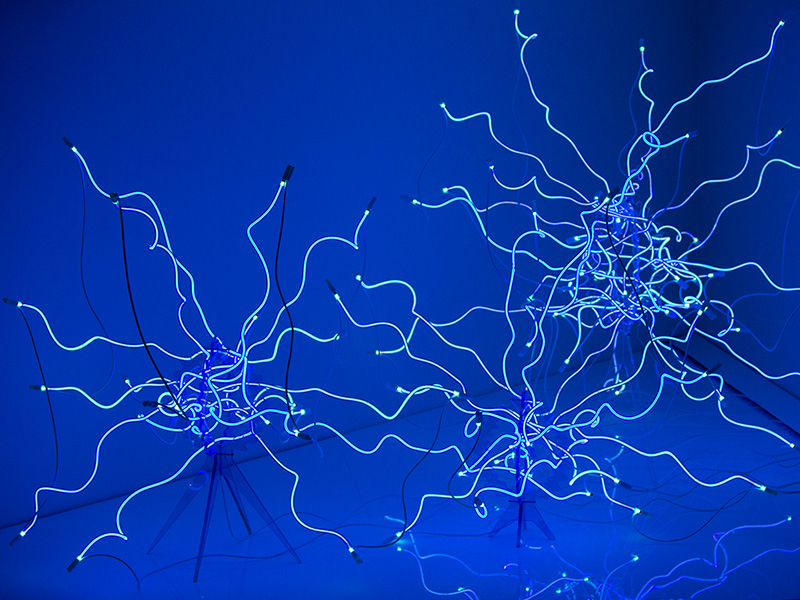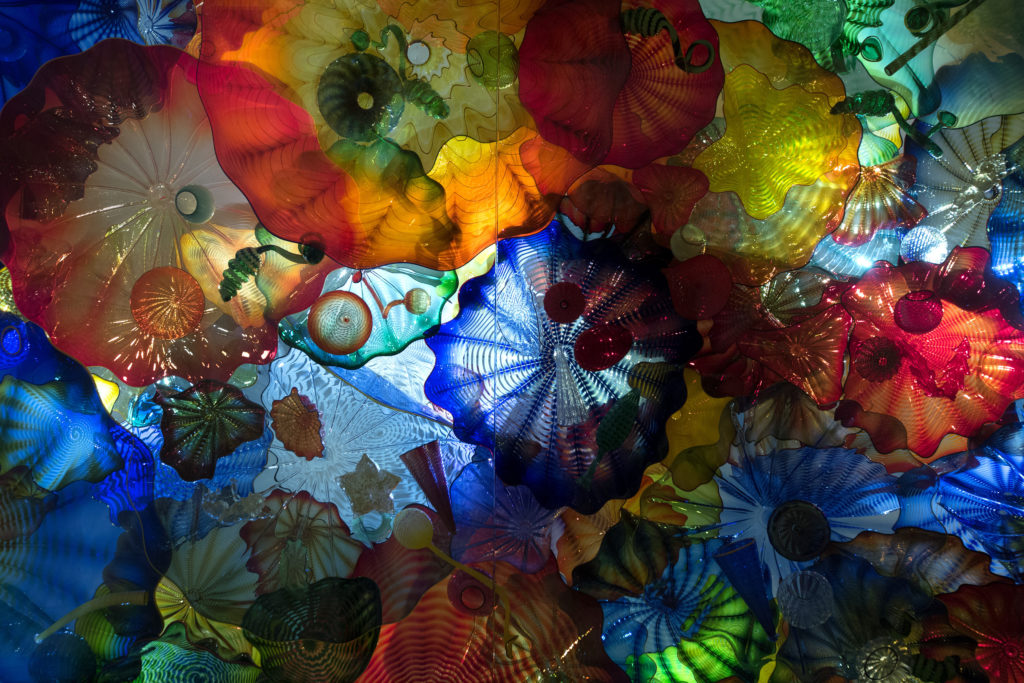
This summer, the Royal Ontario Museum (The ROM), is paying homage to Dale Chihuly, the 74-year-old American artist who pioneered the studio glass movement. For the last 50 years, Chihuly has been pushing the boundaries of his materials—ice, water, glass, and neon—and manipulating the forces of colour and light to create breathtaking sculptural installations for both indoor and outdoor locations.
The ROM’s CHIHULY, guest-curated by Montreal Museum of Fine Arts’ Diane Charbonneau, brings together 11 of his most impressive installations, including both brand new works as well as iconic displays such as Persian Ceiling—a stunning compilation of more than a thousand Persian glass elements situated above a glass ceiling.

Charbonneau hopes that viewers will leave the exhibition with an appreciation of how Chihuly has truly mastered his material, as well as having experienced an emotional reaction to the visceral quality of the artist’s creations. “Nowadays, these are such hard times, and if you can get a sense of being filled by wonder and beauty for the 40 minutes, or hour, that you spend in the exhibition, I think it’s worth it,” she says.
To celebrate the opening of the exhibit, we’ve got the six things you need to know about Chihuly, courtesy of curator Charbonneau.
1. Mother Nature, Literally
Chihuly’s installations often depict abstracted renditions of nature, from glass shells to mammoth-sized icicles and tumbleweeds. What we didn’t know until now is that not only is this inspiration drawn from his upbringing in the diverse landscape of Washington, but also his mother’s garden. “He really loved her garden, and it was beautiful,” says Charbonneau.
2. Monumental Master
Chihuly has been experimenting with sculpture for half a century now, and of course, his work has evolved. Since the early 2000s, the glassblower has expanded his roster of creations to include large, monumental pieces, both indoors and out. What is consistent though, explains Charbonneau, is that his work is always in direct dialogue with the space that he’s working in. “He thinks spatially when he’s installing his work,” she says.
3. Colour Me Cool
Chihuly knows how to manipulate his material, and continues to lift his work to new levels by understanding the effects and use of colour in his glass creations. “He’s a great colourist,” asserts Charbonneau. Walking though the exhibition, one notices that rather than mounting his work on white surfaces, black plexiglass is used as a backdrop in order to further reflect the colours of his work, and offer a sense of infinity.
4. A Worldly Wanderer
Born in Tacoma, Washington, Chihuly’s work captures, at once, the spirit of the West Coast. Indigenous elements such as woven baskets are threaded through his work, and as mentioned above, he continually looks to nature for inspiration. Throughout his career, Chihuly has made a point of travelling the world to engage with artisans and cultures. In 1968, he received a Fulbright fellowship and went to work at the Venini glass factory in Venice—the first American to do so—where he learned new techniques from the Italian masters. He has also travelled to Ireland, Finland, Mexico, France, and the Czech Republic, each new locale informing another layer of his work.
5. Jack of Two Trades, Master of Both
Chihuly trained in both the fine arts, where he nurtured his eye for sculpture and colour, and in the decorative arts, where he became interested in the vessel. Marrying these experiences, Chihuly has effectively defied the limits of what a vessel can be by transforming its shape from functional to sculptural.
6. Dream Team
Having grown up as the son of a union organizer, Chihuly excels at working in a team setting. “There’s a tradition of working in a studio environment, going back to the Renaissance, where you have artists working with assistants,” says Charbonneau. “Chihuly surrounds himself with glassblowers, technical installers, engineers, architects, and artisans.” Having worked alongside Chihuly twice now, Charbonneau has noticed how energized he gets when he is working alongside his team. “You can really see him get fully engaged,” she reflects.
CHIHULY will be on display at the ROM until January 2, 2017.
